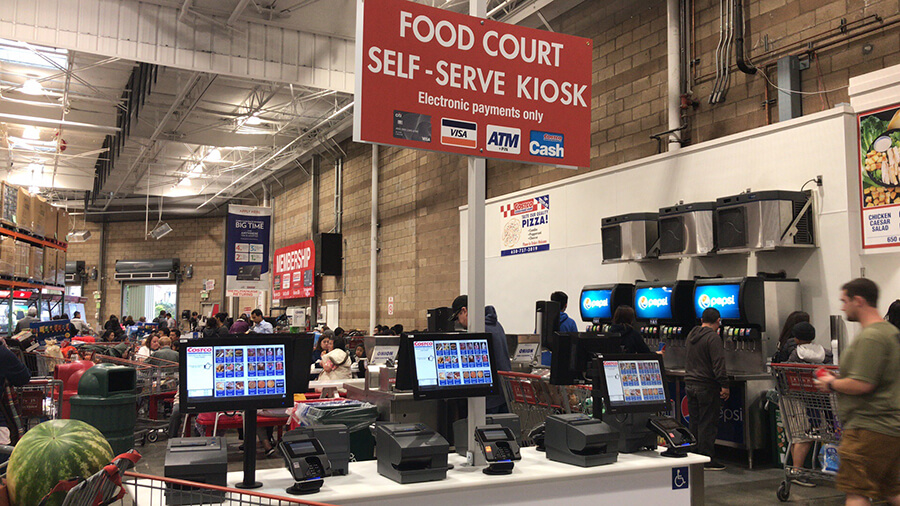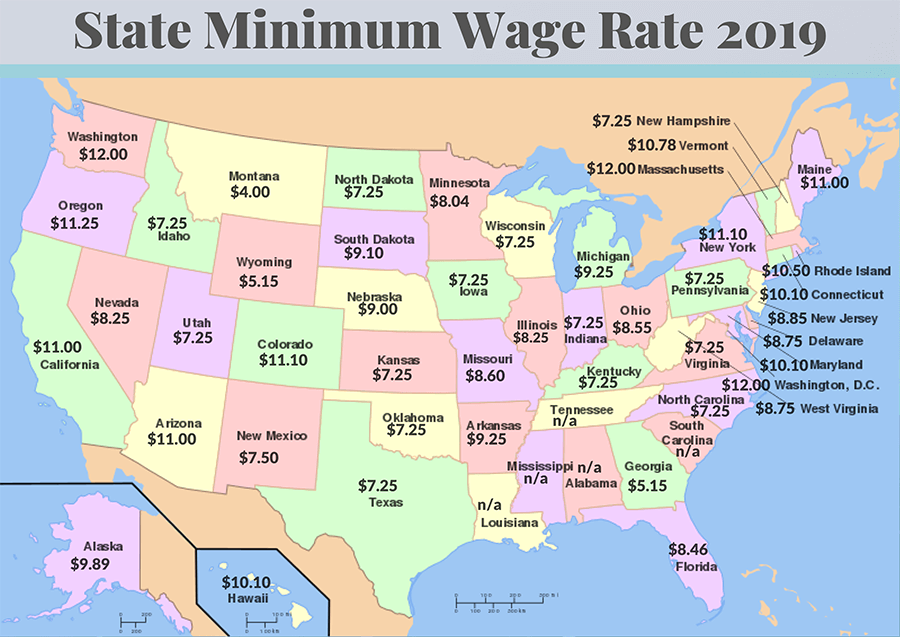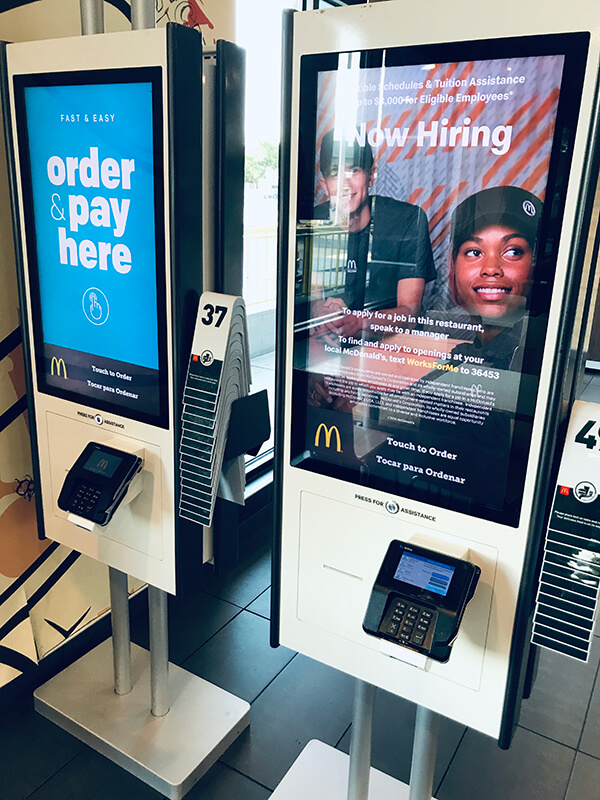Should Small Restaurant Owners Set-Up Self Order Kiosk?
Reduce
As a small restaurant owner, you have low-profit margins but lots of bills to pay.
In other words, you can't afford to pay a high price to try out a new technology that might not fit your restaurant.
You probably already experienced McDonald's Self Order Kiosk. You probably already noticed Costco's food court line going much quicker after integrating a Self Order Kiosk.

The big chains like McDonalds, Costco, Panera are crushing it. Fewer cashier, lower labor cost, lower workers' comp, and much more efficient. Sounds too good to be true.
"Should I give it a try?" you ask.
Reading this post might be a good start.
We've put together 6 Pros & Cons that covers the benefits and difficulties that most small business owners face with Self Order Kiosks.
Plus, I will be lumping you into statistics and numbers. By the time you're done, you'll be able to determine if a Self Order Kiosk will work out in your restaurant.
Here are 3 Pros for small business owners to set-up Self Order:
1. Saving The Real Labor Cost
Setting up Self Order Kiosks typically means fewer cashiers, this is a huge benefit considering how much you're paying for labor cost.
One of your biggest overhead is labor cost. Which includes but not limited to:
- Employee wages
- Social security & medicare taxes
- State required unemployment compensation insurance
- Workers compensation insurance
- Paid time off, overtime, etc
What's your Real Labor Cost? The real labor costs to this point are typically in the 1.25 to 1.4 times base salary range- e.g. the real cost range for a $50k/year employee is actually $62k to $70k.
Base on research information provided by Joseph G. Hadzima Jr, Senior Lecturer of MIT - How Much Does An Employee Cost?
The following is a list of minimum wage rates for each state for 2019. The data is based on information provided by the Economic Policy Institute, the National Conference of State Legislatures, and the Labor Law Center. Please note that the federal minimum wage has not been raised since 2009, but many states and localities have raised their own minimum wages.

2. Increase Sales
DID YOU KNOW?New research from Tillster shows that 25% of restaurant customers have used a self-ordering kiosk at a restaurant within the past three months—up 7% year-over-year. Further, more than 65% of customers said they would visit a restaurant more often if self-service kiosks were offered, and 30% of customers prefer to order from a kiosk versus a cashier if the lines were of equal length.
Not only your customers are more willing to return. The Self Order Kiosks also helps promote new offers, much better than a real person. The kiosk can pop out a small promotion window prior to checkout, or ask if your customer wants to add a small fries for a dollar.
3. Customer Satisfaction
"But a real person can provide better customer service."Really?
- Self ordering is more accurate, the kiosk will never mishear your customer's order
- Self ordering is faster, your customer can review their whole order in a fast and efficient way
- Self ordering allows your customer to customize their order without the pressure
- Self ordering makes it much easier to order an enormously embarrassing spread of food
- Self ordering eliminates waiting time. People are only waiting for their order, not waiting to order.
McDonalds' Self Ordering Kiosks rolled out in 2015 and will be installed in all 14,000 locations nationwide by 2020.

But why Self Order is not a common feature in all the restaurants nowadays?
Here are 3 difficulties for small business owners to set-up Self Order:
1. Ridiculously Expensive
This should be the biggest difficulty that stops most small business owners from installing a Self Order Kiosk. Believe it or not, the current Self Order service providers are charging almost as expensive as hiring a cashier.
Typical fees include but not limited to:
- $500 and up installation fee
- $50 and up monthly subscription fee
- 3% - 5% commission of your gross sales
No installation fee. No subscription fee. Simply ¢10 per order with 300 free orders every month.
Check out our price chart here.
Stay tuned for our next blog that compares all the pricing and features of some big Self Order service providers such as Toast, TouchBistro, Lightspeed, etc.
2. Hard To Get Started
Most Self Order companies' set-up procedure is not self-serviced. You will be spending a lot of time with your sales rep just to get started.
- Fill out the contact form
- Schedule a demo with a sales rep
- Go through a 30 - 45 minutes demo
- Signs the contract
- Sends over your menu and photos
- Waiting for hardware to arrive
- Schedule for technician to set-up hardware (some provides self-install kit)
Not only it's expensive, it's also time-consuming.
Check out Reduce's simple 3-Step Set-Up Process:
Get a compatible device
Download the Reduce Self Order app
Create your account and menu
3. POS Integrations
Imagine you have to work with two POS, two sales reports, two tax reports, two data sheets, then merge the numbers yourself with Excel.
A lot of Self Order service providers only support one POS company, you will be required to switch to their POS or just work with both.
Reduce will integrate with many major POS companies in the industry. Currently, we fully support Square POS, along with Clover POS in Q4 of 2019.
Submit a quick note to let us know what POS you're using, so we can work on integrating your POS system next!
Submit surveyCreate free accountContact us